Best mountain bike rear hubs: converting pedal power into forward motion
Front hubs merely roll along, but rear hubs are an integral part of the drivetrain that directly affect pedalling performance
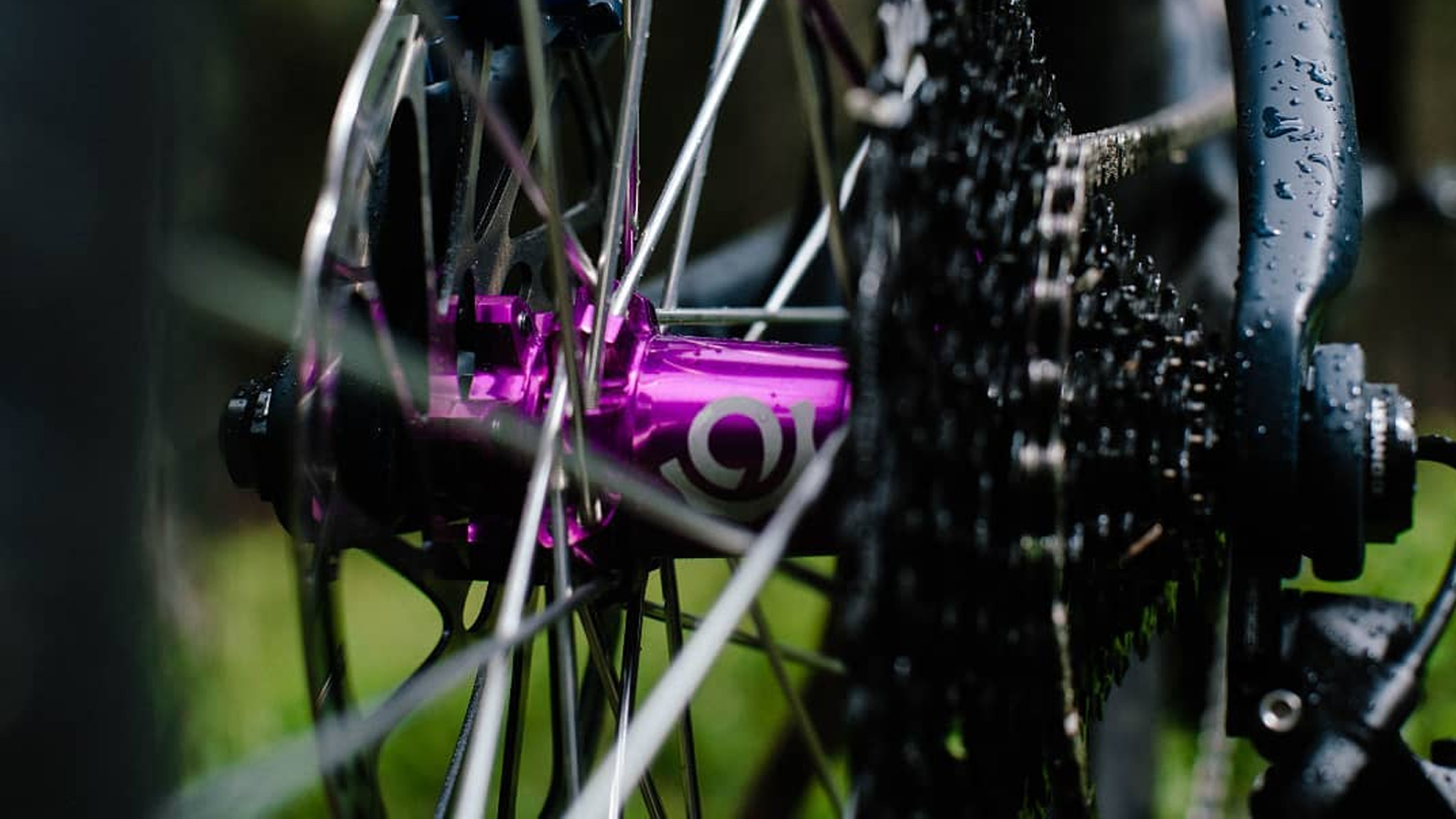
Rear hubs come in a variety of bright colours and often signature buzzing freehub noises on overrun, however, there is a lot more to them than appearance and mechanical sound signature.
Rear hubs have a variety of functions. They create an anchor point for your wheel spokes, brake rotors and a mount for axle rotation. By far the rear hub’s most important role whilst riding is its function as an element of your mountain bike’s overall rolling efficiency: as it engages and disengages your pedal input to the rear wheel.
Best mountain bike wheels: the best MTB wheels reviewed
Best MTB groupsets: the best mountain bike groupsets tested
Best mountain bike brakes: Bike Perfect's best MTB brake picks
Rear hub design attempts to balance mechanical complexity with durability and serviceability. The desire for engineers is to create rear hubs with a ratchet ring and engagement profile that provide near-instantaneous pedal pick-up.
Hub internals can’t be overly complex either, as home mechanic serviceability, without the need for propriety tools, is an important ownership consideration for many mountain bikers.
Great carbon-fibre rims can be undone by substandard hubs, delivering a mountain bike wheelset that lags on pedal input or develops bearing play after repeated use in technical terrain.
The best mountain bike hubs have precision manufacturing tolerances, preventing both bearing play and environmental contamination. A higher number of engagement points are also desirable, creating a minimal lag between your pedal input and rear wheel rotation.
Best rear hubs for your mountain bike
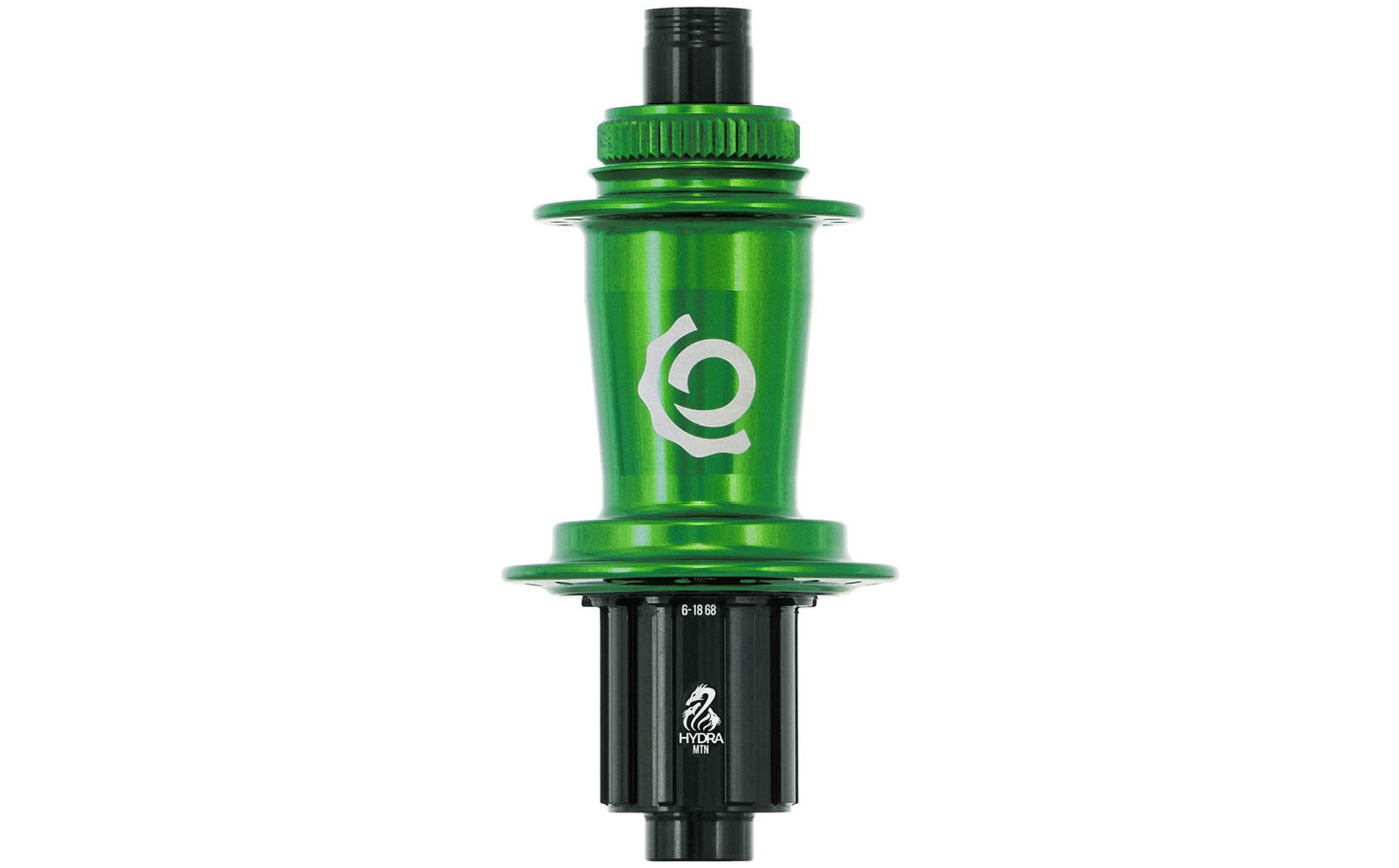
Industry 9 Hydra Classic Boost CL
Specifications
Reasons to buy
Reasons to avoid
The American brand is renowned for its unique hub sound spectrum and with the Hydra, you can alter its acoustic profile. Dumonde Tech freehub oil makes it louder and Tech Pro-X freehub grease quietens the Industry 9 Hydra on overrun.
Available in either 28- or 32h configuration, depending on how strong you wish to build that rear wheel with four additional spokes, the Hydra Classic Boost CL hub is also easily serviceable. Industry 9’s engineers and industrial designers have built the Hydra Classic to allow maintenance without the requirement for any propriety tools.
If you require a rear hub with very little power transfer lag, the Hydra Classic rear hub is geared for rapid 0.52° engagement and has an incredible 690 contact points through its rotation.

DT Swiss 240 EXP
Specifications
Reasons to buy
Reasons to avoid
If you desire to build a light and reliable rear mountain bike wheel, these DT Swiss hubs make an ideal anchor point for that project.
DT Swiss has updated its 240-series hubs with new EXP internals, which further evolves the brand’s brilliantly reliable star ratchet system. Engineers wished to achieve a compact hub shell and therefore the DT Swiss 240 EXP lacks an enormous amount of engagement points, totalling only 36. That said, there is an upgrade kit which increases its points of engagement to 54.
The DT Swiss 240 EXP rear hubs are produced in a dizzying variety of sizes to fit virtually any contemporary mountain bike frame: 12x142mm, 12x148mm, 12x150mm and even the ultra-wide 12x157mm+ standard, mostly seen on downhill racing bikes. Freehub compatibility is good too, with SRAM XD, Shimano standard and Micro Spline all supported.
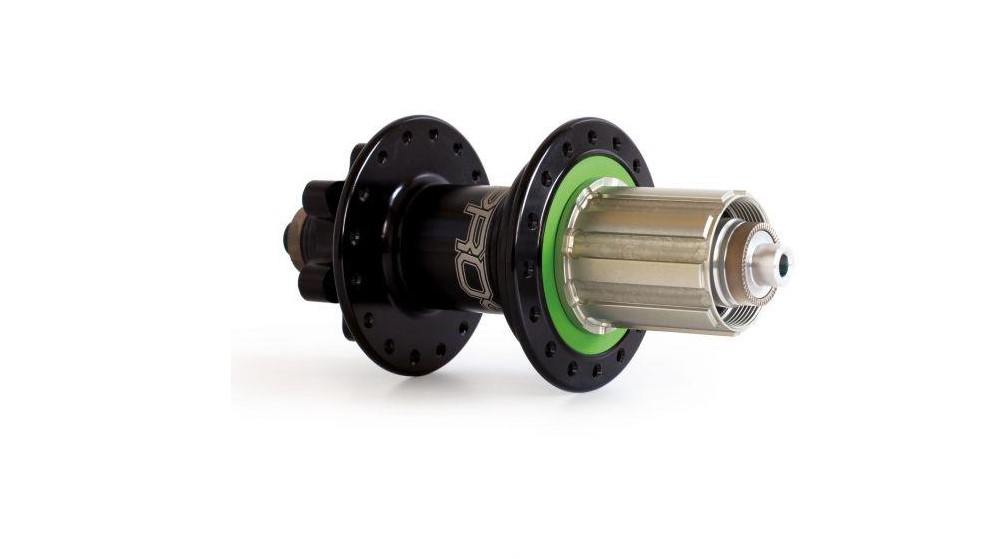
Hope Pro 4
Specifications
Reasons to buy
Reasons to avoid
The British mountain bike component brand has built a deserved reputation for producing hubs which are fantastically durable in muddy conditions. Hope’s commitment to meticulous engineering tolerances has delivered a rear hub which will keep spinning efficiently, even after a succession of rides in the muddiest of conditions.
Beyond its inherent production quality, the Hope Pro 4 rear hubs are also amazingly adaptable, which will be a feature of value for those who fear their wheelset might not be futureproofed against evolving axle standards.
Hope’s Pro 4 is built in both the 142x12- and 148x12mm widths but there are conversion kits to make them QR adaptable too. These rear hubs are compatible with Shimano’s 10-, 11- and 12-speed MicroSpine freehubs, in addition to Sram’s XD.
Four spoke count options are available, allowing you to create an ultra-lightweight 24h wheel or even an overbuilt 36h enduro wheel, to support large riders over technical downhill terrain. Hope’s 4-pawl system has a unique sound signature and its 44t ratchet engages at 8.2°. Not the fastest engagement available, but unquestionably reliable.
- Hope mountain bike wheels: a comprehensive overview
- Hope HB130 review: Hope's new trail bike tried and tested
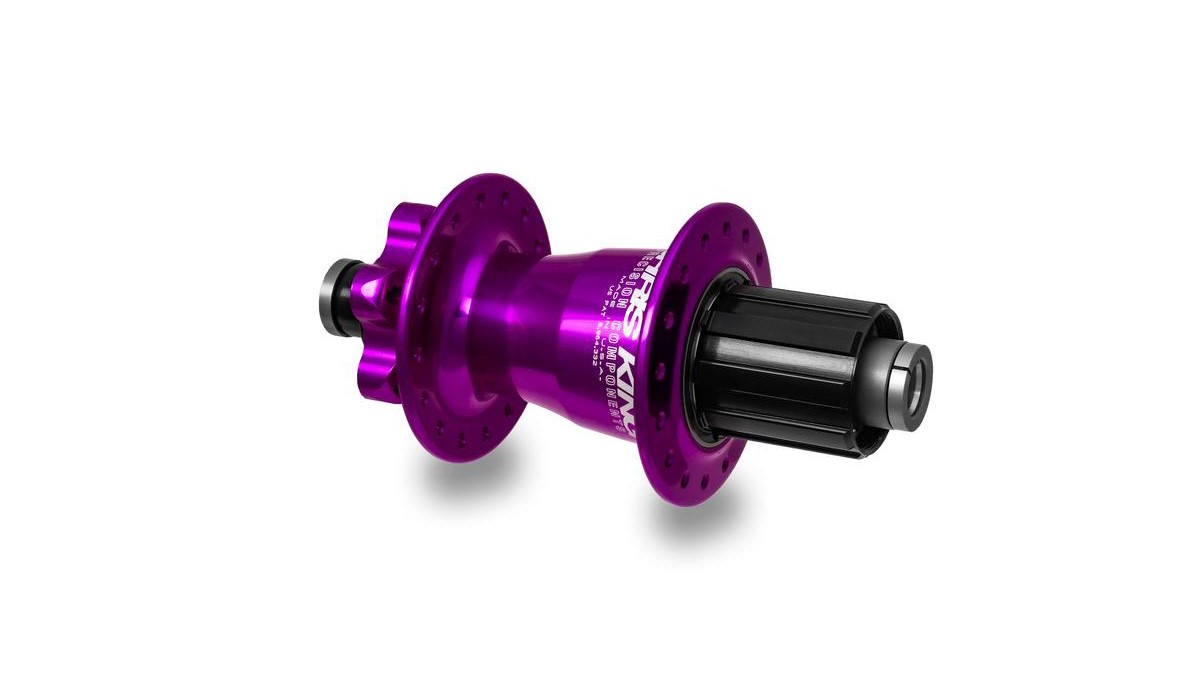
Chris King ISO B 1
Specifications
Reasons to buy
Reasons to avoid
For some, the most desirable of all mountain bike hub brands is Chris King who controls all production of its hubs in a single facility. The company prides itself on the quality of its Portland produced bearings, which are slotted into surgical grade steel races.
Using its own tooling for the manufacturing of both races and their corresponding bearings, Chris King claims unmatched mechanical tolerances.
Aware that flange profile is important for ultimate rear-wheel strength, the Chris King hubs canted flanges and are specifically designed for the 148mm rear width standard.
Casual maintenance is eased by a 2.5mm hex tool gaining you access to the internals. A full rebuild does require Chris King's own hub service tool, but it could be years of hard riding before that is required.
Performance is excellent, courtesy of Chris King’s patented Ring Drive system. It comprises 72 simultaneously interfaced points of contact for rapid engagement. Chris King also supports a wide variety of spoke options (24h, 28h, and 32h), allowing its rear hubs to be used in lightweight XC wheelsets and robust enduro wheels.
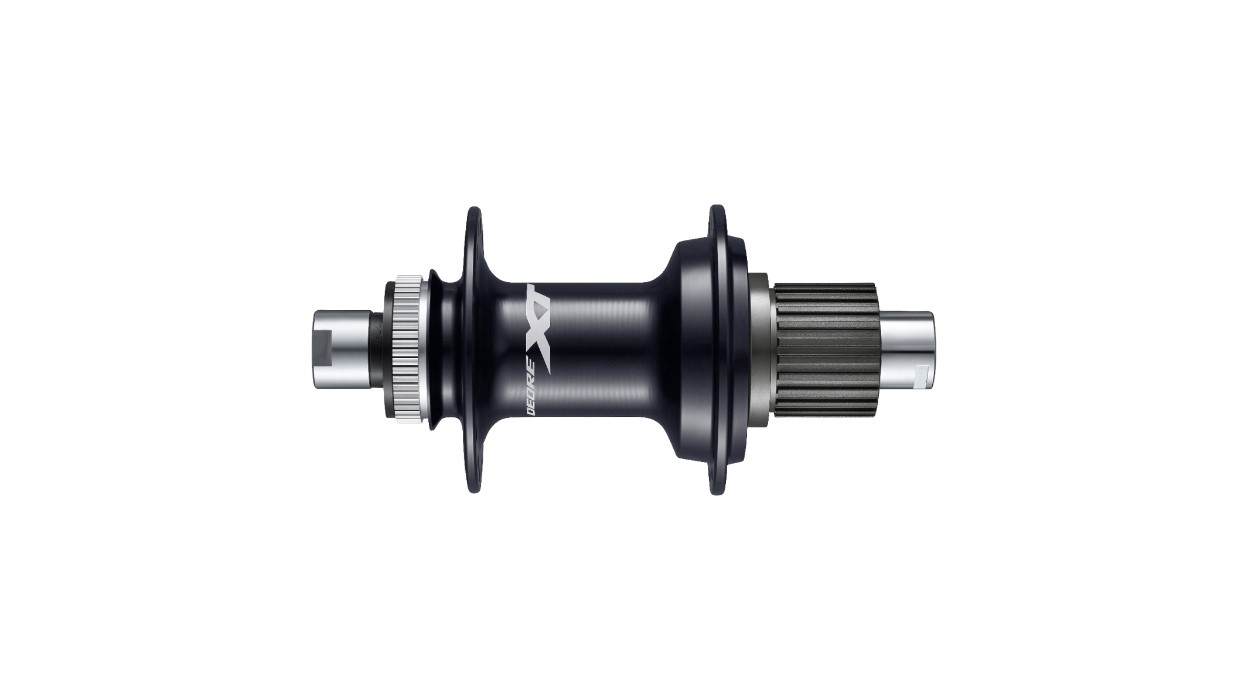
Shimano Deore XT
Specifications
Reasons to buy
Reasons to avoid
Affordable and durable, Shimano’s Deore XT grade components are ideal for mountain bikers on a budget. The latest Deore XT hubs benefit from Shimano’s Micro Spline tech, which increases the freehub body's spline count from 13 to 23, creating a much better distribution of torque loads.
Adaptable to all three the primary rear hub spacing sizes (142-, 148- and 157mm), the Deore XT hubs have internals with 36 engagement points, contacting at every 10°. The result is a modestly swift pedal pick-up with remarkably little freehub noise on the overrun.
Shimano continues to use a very simple cup and cone bearing system for the Deore XT rear hub, which should run faultlessly for many miles. Spoke counts run 28h, 32h and 36h, allowing for light- and heavy-duty wheelset builds, using the Deore XT hub.
How to choose the best rear hub for you
1. Bearing quality
Why trust BikePerfect
The more spherically perfect your rear hub bearings are, the greater their overall mechanical efficiency.
Steel or ceramic are the primary bearing material categories, with very few hub manufacturers (Chris King being one of those), offering the more expensive ceramic option.
A rounder shape will produce less bearing friction and ceramic materials achieve this with greater accuracy than steel. A ceramic hub bearing can be seated in its cartridge with narrower tolerances and less rotational friction than steel.
Ceramic bearings are also less vulnerable to structural flex under load than steel. For rear hubs, which often have to deal with significant high-speed cornering side loads, that means greater durability – especially for those mountain bikers who ride their frames on the limit.
Machining techniques can create perfectly round steel bearings too, but that requires production which is controlled within the hub brand’s own factory – to its dedicated specifications.
2. Axles
A point of contention with rear hubs are their axle spacing. As mountain bike frame design has progressed, rear triangles have become wider. This allows for a better wheel build, by allowing stronger spoke angles, laced to a wider flange base.
An issue with the trend towards wide rear-end frame design is that your expensive and cherished rear hub might risk becoming incompatible. Sizing standards have moved from 135- to 142mm, and now most mountain bike frames have a 148mm rear hub axle spacing.
Some hub brands offer a variety of widths. Other don't. If you are anxious that your hub or frame choices could become problematic in future, it is best to choose a rear hub which is adaptable, with removable end caps or axle conversion kits. Hope is one of the better options in this regard.
3. How many teeth do you need?
There is a simple way of interpreting and understanding how the number of ratchet teeth influences your rear hub’s performance.
A greater number of teeth will create far swifter engagement for each degree your cranks turn. This delivers the most efficient power transfer.
As the rear hub ratchet teeth count increases, those individual teeth reduce in size, due to packaging constraints on a ratchet ring and size of the hub shell. Smaller teeth have a reduced ability to deal with extreme torque input loads.
Fewer teeth allow for larger individual metal profiles, which cope better with peak torque loads, as the rear hub engages from coasting to pedal stroke power input.
For most mountain bikers, especially those running 1x12 drivetrains, rapid engagement is preferable and the risk of a peak torque load into their rear hub is low. Therefore a rear hub with more teeth is generally regarded as being superior, for most mountain bike applications.

Lance Branquinho is a Namibian-born journalist who graduated to mountain biking after injuries curtailed his trail running. He has a weakness for British steel hardtails, especially those which only run a single gear. As well as Bike Perfect, Lance has written for MBR.com, Off-Road.cc and Cycling News.
